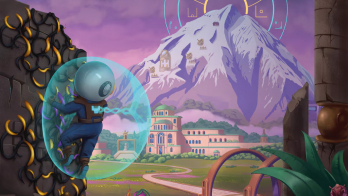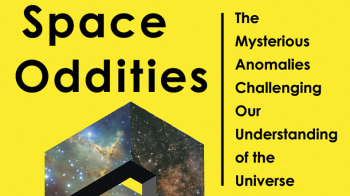During its eight years of operations, CERN S’Cool LAB gave nearly 40,000 visitors hands-on experience in particle physics. Julia Woithe explains how the new educational labs at Science Gateway will awaken the inner scientist in even larger and more diverse audiences.

In 1826, the Swiss pedagogue and educational reformer Johann Heinrich Pestalozzi advocated for a natural and meaningful education through a holistic learning approach that engaged “the hands, head and heart”. One prime example of such an approach is found in science education, where experiments allow learners to experience scientific phenomena while manipulating ideas about experiments in their minds. Experiments are also associated with high affective value, as school students generally enjoy practical tasks and often rank them as preferred learning activities in school. As a result, experiments have long been considered an essential part of teaching the nature of science, and only very few science educators have questioned their necessity.
Consequently, it was long overdue for CERN to offer opportunities for visiting high-school students to get hands-on with particle physics. In 2014, CERN inaugurated its first particle-physics learning laboratory for high-school students. During its eight years of operations, “S’Cool LAB” gave nearly 40,000 visitors a unique opportunity to make discoveries independently, work scientifically and gain insight into modern science in the making.
A major factor in S’Cool LAB’s success was its connection to the latest thinking in physics education research. Interestingly, learning from hands-on experiments is (still) one of the central problems of physics education research. Even though students often enjoy doing experiments, various factors influence what and how much students learn from the exercise. To address this research gap, educational activities at S’Cool LAB were continually developed and improved through accompanying physics education research projects. For example, experimental tasks were designed to challenge scientifically inaccurate mental models (such as bar magnets having electrically charged poles) by allowing students to compare their predictions with surprising observations and thus foster conceptual understanding. Moreover, empirical research carried out based on questionnaires from students before and after taking part in lab workshops confirmed significant positive effects on high-school students’ interest in physics and their beliefs in their physics-related capabilities, and a surprisingly high correlation between these affective outcomes and students’ perceived level of cognitive activation. Remarkably, girls benefited more from S’Cool LAB with respect to their interest and self-beliefs. Consequently, the initial gender gap (with girls reporting slightly lower interest and self-beliefs than boys) was closed.
New incarnation
On 12 January 2023, excavators arrived to dismantle S’Cool LAB to make space for the new educational labs at CERN Science Gateway. Several considerations went into the design of the new labs. Firstly, they have a broader scope, catering not only to high-school students and their teachers but also to school students as young as five, as well as the general public. Indeed, Science Gateway offers regular workshops open to individual visitors, tourists and families. Moreover, workshops are adapted to different age groups and cover many different topics such as engineering challenges, different technologies, detection principles, or medical applications of particle physics. This diversity allows for better adaptation to the needs of students and teachers, who often prefer workshops that can be easily integrated into their science curriculum.

When designing labs for young learners, a critical choice involves balancing the level of openness and guidance. While open exploration is considered to be the ideal form of experimentation, young students can feel overwhelmed by the choices involved in developing research questions, experiment design and the interpretation of evidence. At the same time, giving students a choice in their learning can foster a sense of ownership and autonomy, leading to increased engagement and motivation to explore topics of personal interest. Providing the right level of guidance and support is therefore crucial to meaningful experimentation and a key element of the education labs at Science Gateway. It helps students enjoy hands-on activities while freeing up mental capacity to process new information effectively. To help teachers prepare their students for the new lab workshops, they now receive detailed information about its planned content and suggestions on how to integrate their experience at CERN into their classroom practice.
The impact of volunteers on students’ interest and self-beliefs was a striking result from physics education research at S’Cool LAB
Despite the variety of lab workshops offered, all activities are anchored in authentic CERN contexts and can even be linked to real objects and authentic equipment in the interactive exhibitions at Science Gateway. This approach helps foster students’ interest in science and provides them with an accurate image of science and scientists. For instance, one lab workshop for students aged 8–15 – the “Power of Air” – allows students to use 3D-printed components and toy balloons to investigate balloon hovercrafts on different surfaces, drawing connections with how engineers at CERN move massive slices of the LHC detectors via air pads.
Community input
To enhance the authenticity of lab workshops, volunteers from CERN’s scientific community accompany students during their learning process and engage in discussions about their findings. The impact of volunteers on students’ interest and self-beliefs was a striking result from physics education research at S’Cool LAB. Students were inspired by the enthusiasm displayed by their guides and appreciated the opportunity to ask questions in an enjoyable learning atmosphere. Therefore, the education labs at Science Gateway will continue to rely on volunteers to facilitate workshops and inspire the next generation of engineers and scientists. To address new challenges related to groups of very young learners, heterogeneous audiences, the diverse collection of lab workshops and the high volume of workshops held each year, a team of professional science educators provides continuous support and guidance to volunteers.
In conclusion, the educational labs at CERN Science Gateway have been designed to provide a wide range of hands-on learning experiences for learners of all ages. These labs aim to not only promote scientific understanding but also foster curiosity, interest and positive self-beliefs in students, empowering them to explore the world of science by demonstrating that science is for everyone.
Further reading
J Woithe et al. 2022 J. Res. Sci. Teach. 59 930.







